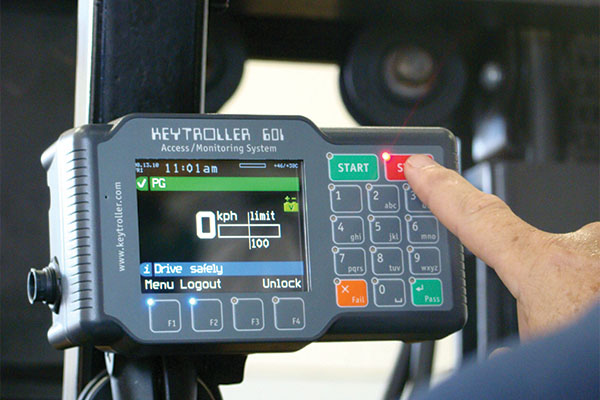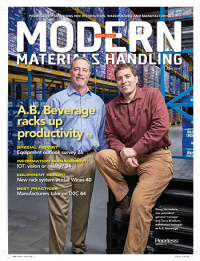Low-cost telematics solutions brings visibility to small fleets
Initially geared toward large fleets, detailed data capture and analysis tools are now more accessible than ever.
Impact sensors, telematics accessories and new standard lift truck features have significantly improved fleet safety and efficiency, but plenty of low-hanging fruit remains. The most sophisticated fleet management technologies tend to trickle down from the largest fleets, but according to Terry Wickman, president of Keytroller, a trickle is not what forklift users need.
Wickman cites research indicating that 73% of warehousing and distribution facilities in the country have less than 24 forklifts, and 50% have less than nine. Given that return on investment is directly proportional to fleet size, few of these small fleets use data capturing technology to manage equipment access, utilization and maintenance—but all of them can benefit from increased visibility.
“Some fleet managers know who is trained, don’t have damage problems and manage pre-shift checklists well,” Wickman says. “For others, if they ever have an equipment-related accident and can’t produce a paper trail of checklists, that’s a huge liability.”
Wickman describes a new generation of low-cost telematics devices based on Bluetooth communication. This avoids the security issues, time and hassle required to integrate with a Wi-Fi network, assuming the small fleet’s facility even has one. Out of the box, Bluetooth can instead communicate automatically to a tablet app to keep operators accountable and schedule maintenance while ensuring smaller fleets stay in compliance with training, checklists and OSHA regulations.
When equipped with an infrared receiver, a lift truck can add further benefits to an operator’s safety and productivity. Wickman describes a device enabling location- and condition-dependent adjustments to forklift performance. For example, an infrared transmitter “gate” can trigger an immediate change in a lift truck’s top speed in one part of the facility. The same device can adjust top speeds when forks are above or below a certain height or depending on the load being carried. To prevent wear and tear on transmissions, drive axles and tires, the device can prevent operators from aggressively changing direction by requiring a low speed before shifting from forward to reverse. Wickman says this feature has extended tire life for some clients by as much as 400%.
The use of cameras is another major development, and one that took Wickman by surprise.
“When we first introduced them, they were a bit of an afterthought in our sales presentations,” he recalls. “Now cameras are included in one-third of our total sales.”
Customers have shown interest in indisputable video evidence of offenses. In the event of an accident, the camera automatically captures the 30 seconds before and after an incident, potentially from multiple angles.
“Maybe you have an accident or near miss in an area that is congested,” Wickman says. “The manager doesn’t see it because they’re not driving the equipment, but they can watch a video and can see how changes to the design of the aisle, for instance, could make a big difference.”

Article Topics
Lift Truck Tips News & Resources
Overlooked no more: The importance of lift truck inspections Lithium transition: It’s all about the outcomes Safety for automatic guided vehicle (AGV) environments Assessing the move to lithium Leasing’s fleet management upside Managing for lift truck operator safety Narrow aisle success: Think systems, then trucks More Lift Truck TipsLatest in Materials Handling
Beckhoff USA opens new office in Austin, Texas Manhattan Associates selects TeamViewer as partner for warehouse vision picking ASME Foundation wins grant for technical workforce development The (Not So) Secret Weapons: How Key Cabinets and Asset Management Lockers Are Changing Supply Chain Operations MODEX C-Suite Interview with Harold Vanasse: The perfect blend of automation and sustainability Consultant and industry leader John M. Hill passes on at age 86 Registration open for Pack Expo International 2024 More Materials HandlingAbout the Author
Subscribe to Materials Handling Magazine

Find out what the world's most innovative companies are doing to improve productivity in their plants and distribution centers.
Start your FREE subscription today.
April 2024 Modern Materials Handling

Latest Resources












